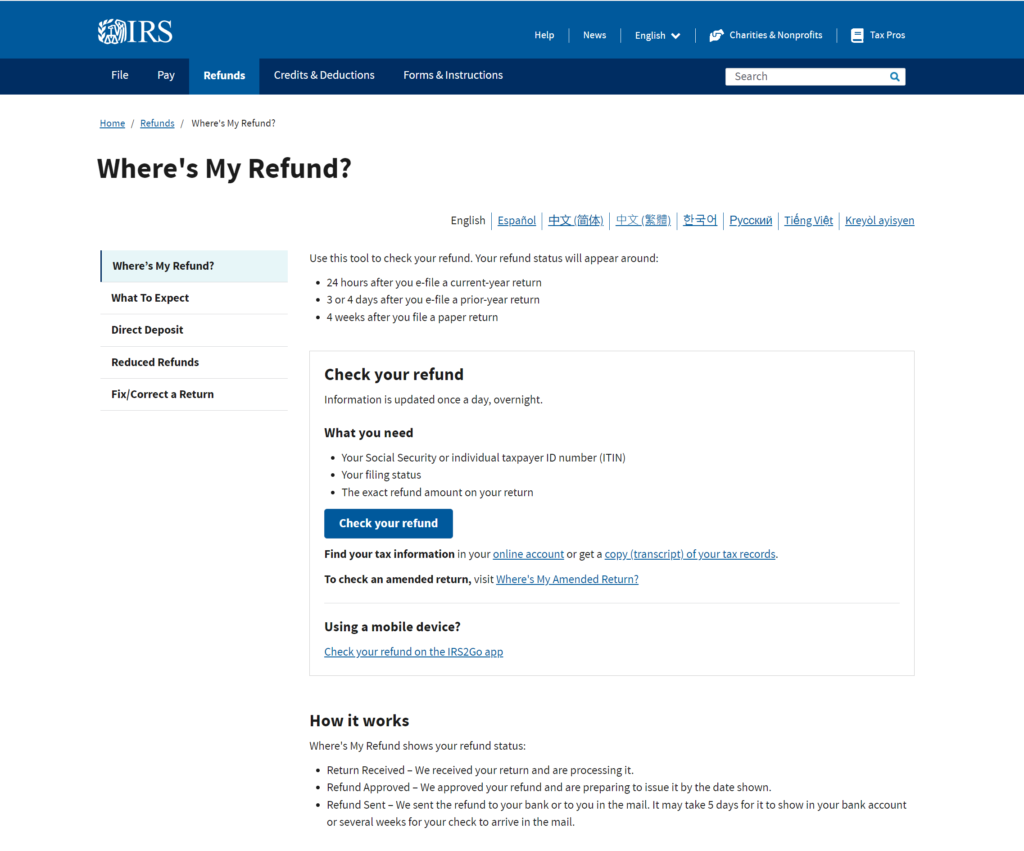
Tax season can be stressful, especially when you’re eagerly waiting for your refund. If you’re wondering, “Where’s my refund?” or looking for an easy way to track your tax refund status, the IRS provides tools to help you check your refund progress. In this guide, we’ll walk you through how to track your refund, common reasons for delays, and tips to ensure a smooth tax refund process.
How to Track Your IRS Tax Refund Status

The IRS offers a simple and secure way to track your refund using the “Where’s My Refund?” tool on their official website. Here’s how you can check your refund status:
- Visit the IRS Website – Go to IRS Where’s My Refund and enter your details.
- Enter Required Information – You will need:
- Your Social Security Number (SSN) or Individual Taxpayer Identification Number (ITIN)
- Your filing status (Single, Married, Head of Household, etc.)
- The exact refund amount shown on your tax return
- Click Submit – After submitting the information, you’ll see the status of your refund.
Alternatively, you can track your refund using the IRS2Go mobile app available on iOS and Android.
Understanding Your IRS Refund Status
Once you check your refund status, you’ll see one of three messages:
- Return Received – The IRS has received your tax return and is processing it.
- Refund Approved – Your refund has been approved and is scheduled for deposit.
- Refund Sent – Your refund has been sent to your bank account or mailed via check.
Refunds are typically issued within 21 days if you file electronically and opt for direct deposit. However, mailed paper checks may take longer.
Common Reasons for Refund Delays

If your refund is taking longer than expected, some possible reasons include:
- Errors in your tax return – Incorrect SSN, mismatched numbers, or missing details can cause delays.
- Incomplete tax return – Missing forms or signatures may slow down processing.
- Additional IRS review – The IRS may review your return for accuracy, especially if it includes large deductions or credits.
- Claiming the Earned Income Tax Credit (EITC) or Additional Child Tax Credit (ACTC) – Refunds with these credits are legally delayed until mid-February.
- Banking issues – If your direct deposit details are incorrect, your refund may be rejected and sent by mail instead.
If your refund has been delayed for more than 21 days, you can contact the IRS at 1-800-829-1040 for further assistance.
Tips to Get Your Refund Faster
- File Early – The sooner you file, the sooner you get your refund.
- Use E-Filing – Electronic filing is faster and more secure than paper filing.
- Choose Direct Deposit – This is the fastest way to receive your refund.
- Double-check Your Information – Ensure all details are accurate before submitting.
Related Websites for IRS Refund Tracking and Tax Policies
For more tax refund information, visit these official sources:
- IRS Refund Status Tracker: https://www.irs.gov/refunds
- IRS Free File Program: https://www.irs.gov/filing/free-file-do-your-federal-taxes-for-free
- U.S. Treasury Department: https://home.treasury.gov/
Final Thoughts
Tracking your tax refund doesn’t have to be complicated. By using the IRS Where’s My Refund tool and following best practices, you can stay updated on your refund status and avoid unnecessary delays. If you experience a longer wait, check for common issues or contact the IRS directly for help.
Make sure to file your taxes accurately and early to get your refund as quickly as possible!





